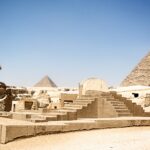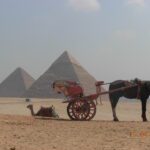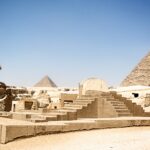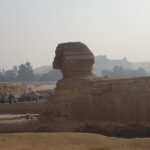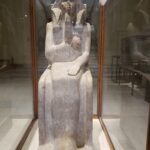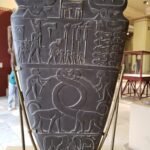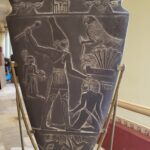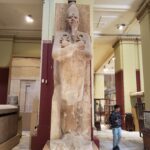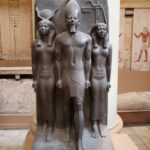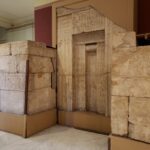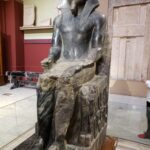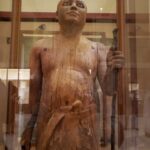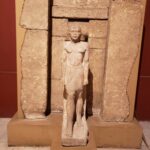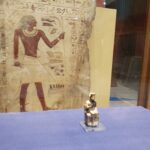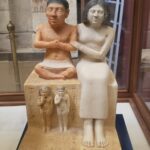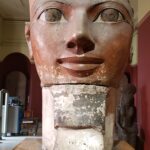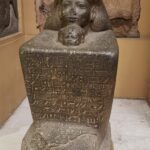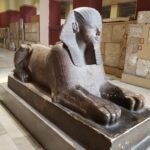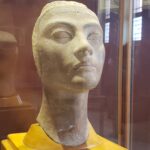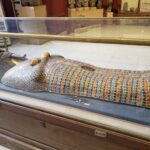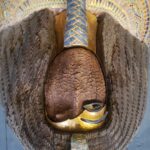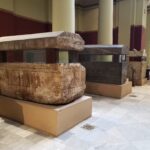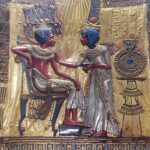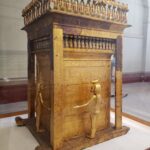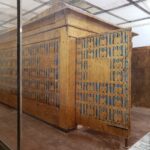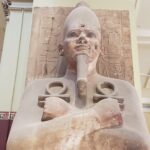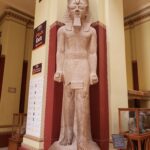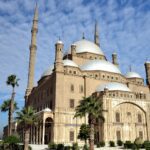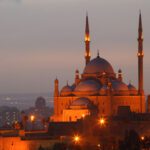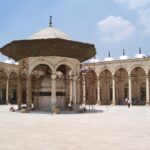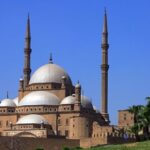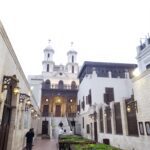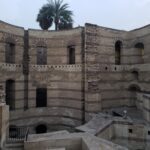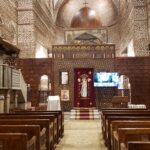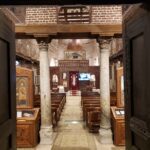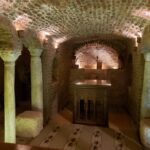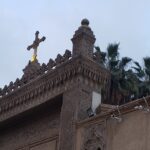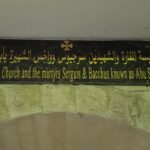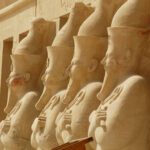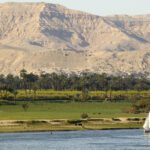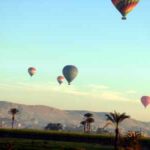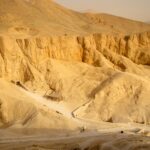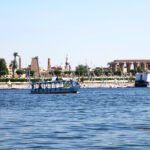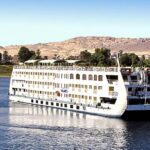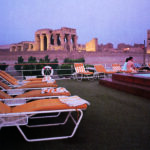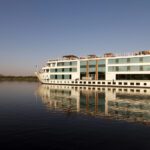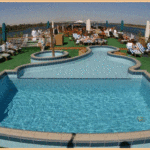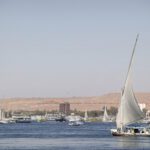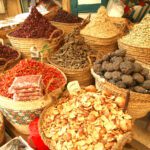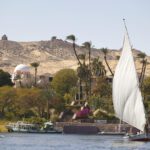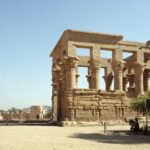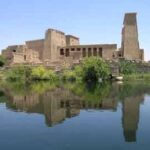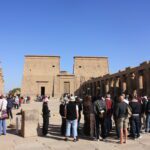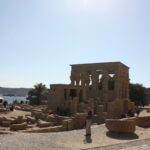Travel to Egypt - the Land of the Pharaohs unique ancient History & Culture
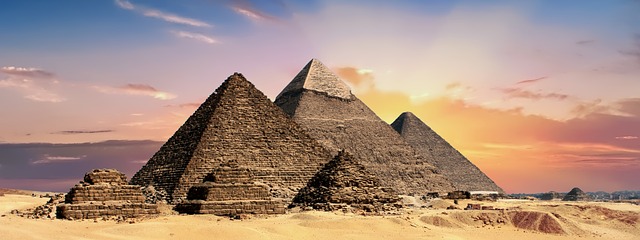
As one of the world’s oldest cultural treasures, Egypt has more than 35% of the world’s old heritage. Egypt has been through some major changes since 2011, but the country’s tourism will always recover because of what it has to offer cannot be offered anywhere else in the world.
The relaxed environment and very friendly people will always be the most significant advantage of Egypt as a tourist destination. During your holiday in Egypt, you will experience the uniqueness of the country’s heritage. It has a lot of beautiful sites ranging from the Pyramids and the Sphinx, to the 5,000-year old tombs in the Valley of the Kings.
The terrace temple of Queen Hatshepsut is unique. When you enter the temples of Karnak and Luxor, you feel like you’ve time-travelled to the time of the Pharaohs. The Horus Temple in Edfu is the best preserved temple due to its young age of only 2,000 years.
Did you know that the double temple of Kom Ombo once served as a hospital? The most beautiful temple is situated on the island of Philae. Surrounded by water, it lies majestic on the artificial island built by UNESCO. Aswan High Dam supplies Egypt with electricity. It is a huge construction, and was once the world´s largest dam. These places are a few examples to mention in a long list the country offers.
When you travel to Egypt, your holiday will be like an oil-painted piece of art carved in your mind that you will always enjoy remembering. A holiday in Egypt will be a memory that will last forever; exactly as the Pyramids have lasted ever since they were built. Your holiday in Egypt is a guaranteed experience of attractions that you will not find anywhere else in the world.
Some facts about Egypt:
Noun of referral: Egyptians. Population:100,388,073 (as of 2019). Egypt, with its over 85 million people, it is Africa’s third-largest country in terms of population.
Almost the entire population lives along the Nile or the Nile Delta. Approximately 90% of Egypt’s population are Muslims (most are Sunni Muslims), and the rest are mainly Christians (Mostly Coptic Christians). But there are also groups of Jewish, Bahia and other smaller religious groups. Besides the religious distinction the population in Egypt distinguish between those who live in cities and fellahin, who live in rural areas.
The minorities in Egypt are a small group of Bedouins, the Berber Siwa (from around Siwa Oases) and 90,000 refugees (Around 70,000 Palestinians and 20,000 Sudanese).
Total area:
1,001,450 sq. km Mainland: 995 450 km2 Water: 0.6 % Population’s structure: 98% Egyptians. 1% Berbers, Nubian, Bedouins and Beja. 1% of Greeks, Armenians and other Europeans (mainly Italians, English and French)
Climate:
Hot desert climate, dry air and moderate winters. Average daily temperature Cairo, Luxor and Aswan (Cairo is always 2-5 degrees colder than Luxor and Aswan)
The country holidays:
Independence from Britain on July 23: National Day Fridays are the Muslim “holy” and some shops may be closed for periods of the day.
Mildly spicy food, international cuisine Egyptian food is very healthy based on much of the Middle Sea dishes, meat and vegetables.
Arabic is the official language. English and French is spoken and understood in the educated classes
Power:
220 V with 2 plugs socket. Note that the American grounded sockets must have transformers from three to two blogs used as power gaps are thin. Time: GMT+ 2h
Vaccination:
No particular vaccination required, but recommended to be vaccinated against hepatitis, tetanus, and medicine against tourist diarrhea. Please consult your doctor.
Currency:
Egyptian Pound is the currency in Egypt. 1 Egyptian pound = 100 piasters.
Currency code is EGP. The most common denominations are 25 piaster, 50 piaster, 1, 5, 10, 20, 50 and 100 pounds. Atlantis Tours urges you to request your photocopy of those notes and coins so you will have an overview for your convenience.
Visas:
No application is required for Americans, but available upon entry, However Atlantis Tours can’t be held responsible for any procedure regarding the country entering. We do recommend you to contact the Egyptian Embassy or nearest Consulate to your state of residency.
Also visit: www.egyptembassy.net
Disclaimer:
Atlantis Tours cannot be responsible for any political or other reasons that can impede your entry to Egypt. If there is any doubt, we recommend you to contact the Egyptian Embassy.
CAIRO is a City of Contrasts
Cairo is the sleepless city, the metropolitan, the contrast, the richness, the poverty, the well-organized, and the chaos. Cairo is the world’s 3rd largest capital with approximately 28 million inhabitants (this figure includes the slum areas and day travelers from nearby cities). But still bears the city a feel and a scent of 1001 night fairy tale with a unique combination of 5,000 years of history. Blended with the exotic East and the civilized western new fashion, Islamic minarets and Coptic Church towers. Dimensions are unimaginable – from the Great Pyramids to the city’s scope.
Cairo, the victorious city, Egypt’s glorious capital, cradle of culture and religion guardian. It is the largest city in the Middle East and all of Africa, it is also the hub of the three continents of Asia, Africa and Europe with its great trade business since the ancient days. The greater Cairo extends to the Nile River banks in Delta’s southern part. Here, the Nile into two outlets: Rosetta and Damietta.
This is the city where past and present meet. In the eastern part, there is visible evidence of the still thriving 2,000 year old Islamic, Christian and Jewish culture. In the western part is Memphis (Giza), the old empire famous capital of the pyramids that is one of the few monuments remaining of the ancient world’s seven wonders.
A journey through Cairo is like a journey through an immortal culture. Cairo is a safe city, you can confidently throw yourself out into the street life, walk around the ancient alleyways and sniff around the exotic, colorful markets. People are both happy and helpful. If you manage to steer away from the most fussy “tourist sharks “you will find that the rest of the “calm shop owner people” are both friendly and interested to get you what you desire.
Egyptians are known for their integrity and hospitality, so if you are interacting with the locals, you will be overwhelmed with the invitations to their homes, or their kind offerings of food. Unlike the Western culture of being afraid of foreigners, local Egyptians are innocently inviting tourists to their home. If you feel uncomfortable with that interacting, simply say “no thanks” with a smile, they will understand.
Giza Pyramids
The 4500-year-old pyramids of Giza, are the biggest and one of the most visited cultural heritage attractions in the whole world. The mystery of the Pyramids have, to this day, puzzled generation after generation of archaeologists and researchers. Although Egypt has more than 90 Pyramids, four or five of them are the most visited. This can give us indications of how those Pyramids look like in comparison to those of Giza, Dahshur Bent Pyramids, and worlds first stone constructed Sakkara step Pyramid. The three Giza Pyramids are the most well known and visited as we mentioned. The Pyramids were built from 2860 BC until the 2450 BC. Cheops Pyramid is the greatest and highest of the three.
It took almost 23 years to build the 146 meters high and 230 meters x 250 square meters. Cheops Pyramid has 2.3 million blocks of stone that weigh between two to nine tons. Kefren’s pyramid was opened in 1818 and Pharaoh Kefren’s large granite sarcophagus is still in the burial chamber inside the Pyramid. If we look at the three Pyramids from a distance, we could see that Kefren’s Pyramid is the highest; that is because it is situated at the cliff of a plateau.
Mykerinos Pyramids is the smallest of the three Giza pyramids; it is only 66 meters high and was built about 2480 B.C. By the front of Kefrens pyramid burial temple is the Sphinx with its 70 meter long and 20 meter high lion body and human head.
These three pyramids are surrounded by several smaller pyramids belonging to royal families and high officials from the ancient times. At the Cheops pyramid, was a Sun boat found in good condition in 1954, and is today, a museum in front of the Cheops Pyramid. This boat is made of cedar wood. Maybe the Pharaoh would use this on a journey with the Sun God Ra. There are thousands of theories.
Sound and light show at the pyramids every night is an experience rarely forgotten. There are many others given in different languages and cultures.
PS: Extra Ticket for entrance to all pyramids.
The Egyptian Museum
The Egyptian museum is the most comprehensive in the world. You will hold your breath for the impressive collection of treasures from 3,000 BC, which holds over 1 million objects. Here we meet the most famous pharaohs and learn about their life and art. The 7 cm high statue of Pharaoh Cheops, the great pyramid builder. The 30 ft high statue of Pharaoh Amenofis 3 and his Queen Teje.
In 1922, Howard Carter found a king’s tomb that was built for a young and less important pharaoh – Tut Ankh Amon. His grave is the only one that has not been plundered by grave robbers. Today he is known throughout the world because of their burial treasures that we get to see just in this museum. Here are the world’s most expensive gold treasures. His beautiful funeral mask and two of his three sarcophagus. All gorgeously covered by gold leaf and lapiz lazuli. His weapons, chairs, chests, lamps, chess, sandals, and jewelry can be admired here.
Citadel Fortess and Mohamed Ali Mosque
Cairo’s second most powerful landmark for the pyramids and the great fortress citadel. Salah el Din built the citadel in 1100. Inside this area, Mohamed Aly built the beautiful alabaster mosque which was completed in 1856. It is one of the most beautiful mosques in Cairo, also called the city of the thousand minarets. From the top of the Citadel, you can look out over the city. Mohamed Aly ruled the country in the 1800s and built, among other things, railways, schools, and water systems. The Citadel campus also has four other ancient mosques and the great military museum, showing war with Israel from 1967 to 1972
Khan El Khallili Bazaar
Khan El Khallili Bazaar is one of the Middle East’s most famous and largest bazaars (souk). This was built by Prince Al Garka Khallili in 1382, and looks the same today as it did then. The bazaar is surrounded by magnificent mosques, many cafes and festivities taking place 24 hours a day. Cairo is a city that never sleeps, it is said. Near the bazaar is Al Azhar Mosque and university built in the 900 ‘s AD and is the oldest university in the world
Old Cairo
In the district of “Old Cairo”, we find Egypt’s oldest churches dating back to the 5th century A.D. Abu Sarga is the oldest church in Egypt and was constructed over the crypt the Holy Family stayed for three weeks during their escape in Egypt.
According to a biblical narration by evangelist Matthew (Chapter 2), Virgin Mary, Joseph and the baby Jesus fled from Palestine to Egypt out of fear from the persecution of the Jewish King Herod the Great. The Holy Family traveled as far as Assiut (“Deir el Muharraq”) and on their way back home spent some weeks in Old Cairo.
Abu Sarga is dedicated to the two Saints Sergius and Bacchus who served as soldiers in the Roman Army. They were faithful followers of the Lord Jesus and refused to worship the Roman gods. For their Christian belief, Sergius and Bacchus eventually suffered martyrdom in Syria in 296 during the reign of the Roman Emperor Maximinus. Their relics are partly kept in Abu Sarga and others are buried in Syria. Abu Sarga is based on a basilican structure once kept Egypt’s oldest altar which was transferred to the Coptic Museum.
Al Moallaqa Church is also referred to as the Suspended Church or the Hanging Church. It is called the Hanging Church because it was built on the southern gate of the Roman Fortress. Logs of palm trees and layers of stones were constructed above the ruins of the Roman fortress to be used as a fundament. The Hanging Church is a unique church and has a wooden roof in the shape of Noah’s ark. From the 7th century to the 13th century, the Hanging Church served as the residence of the Coptic Patriarch. Al-Moallaqa has witnessed important elections and religious ceremonies.
The famous miracle of moving the Moqattam Mountain is closely related to al-Moallaqa. Al-Mu’izz, a Fatimid khaliph, asked Patriarch Abraham (975-978), the 62nd Patriarch, to prove the truth of a verse in the Bible. Al-Mu’izz asked Patriarch Abraham to move the Moqattam Mountain in order to prove the words of the gospel “If you have faith the size of a mustard seed, you shall say to this mountain: Remove from hence to yonder place, and it shall remove “(Matthew 17-20).
After three days of praying and fasting in front of the painting of the Virgin Mary depicted on a column in al-Moallaqa, the Virgin Mary appeared to Patriarch Abraham in a vision and told him what to do. The painting of the Virgin Mary exists in the church to this day. Al-Mu’izz was convinced of the truth of the Christian belief and allowed the Coptic Church certain privileges.
LUXOR
World biggest open museum; it has more than 35% of the world heritage. Everywhere in Luxor you will find a peace of history from 3,000 years and back, with old temple fortresses, pylons, obelisks, gigantic statues and rocks. Here you will meet farmers on donkeys back in the green fields and camels, buffalos working around the water wells. An overwhelming smell of exotic spices rising up from the ground, and in the far you will hear the muezzin’s prayer for the day.
LUXOR is the farinose capital in ancient time; it was called ”Thebes” or “the city of a hundred gates “. Take a walk through history, see and feel the mystery of the Ancient Egyptians tombs, experience the huge temples, explore the exotic bazaar, and enjoy the sunset over the Nile, the mountains, the green sugar-cane fields and the golden desert – where Egypt is most beautiful.
Luxor was once the world’s largest religious center with around one million inhabitants. Now home to around 250,000 people in the city, and most live off of tourists. It was the Arabs who called the city of Luxor (with its surroundings), which means “palaces”. The Nile divides the city into two sides: east and west. On the eastern shore, lies the city center and the magnificent temples. On the west bank, lies villages and tombs of the ancient Pharaohs and noble families.
In the bazaars area you are advised to adopt the Egyptian bargaining culture – This will be one of the most exciting moments of the entire trip. You may offer 25% of the price which will be your best offer. Another local experience to do; a romantic sail on the Nile on a traditional sailing boat called ”felucca ” belong. The classic way to see the city also is to take a tour in a horse carriage. Several restaurants offer evening entertainment and belly dancers.
VALLEY of the KINGS
The “dead man’s land” – Valley of the Kings. West Bank of the Nile was considered as the dead land at the Pharaonic era. Here is where the Pharaohs of the 18th dynasty dug their tombs behind the mountain. The way to those tombs was top secret and was kept by the tomb builders and the highest priest. Those tombs were mainly to preserve the Pharaohs’ body for the journey of after-life. The tombs were filled with magic spells, colorful images and treasures. Despite numerous raids, they are still amazingly beautiful with their deep burial shafts where walls and ceilings are covered with paintings, reliefs and mysterious hieroglyphs. We cross the Nile, driving over the new bridge to get to the once secret and sacred place where Egypt’s greatest rulers were laid to rest. During your visit to the Valley of the Kings, we visit three tombs that are included on our excursion ticket. Remember to ask your guide about the extra entrance fees for the tomb of Tut Ankh Amon.
Among the fifty something tombs in the Valley of the Kings Tut Ankh Amon’s grave is the only one that has been discovered intact and not raided by grave robbers. This tomb is the smallest in the Valley, but the most famous, and all his possessions can be seen in the Egyptian Museum in Cairo.
VALLEY of the QUEENS
In the Valley there were mostly buried queens and princes, but also nobles and workers have their own necropolis. All graves are over 3,000 years old, but the colors are so clear as if it was yesterday that the painter left his brush strokes on the wall. The most beautiful tomb is the tomb of queen Nefertari the wife of Pharaoh Ramesses 2nd’s favorite wife.
PS: The tomb is closed, and visits has to be pre booked and prepaid.
QUEEN HATSHEPSUT Terrace Temple
Under the down curve of the mountains the terrace temple of Queen Hatshepsut is located. The temple was designed with three floors so that the Queen can overlook the whole green valley . The stone walls of this temple are the oldest documented slideshow of its time. It depicts the journey of the Egyptian delegation that was sent by the Queen to exchange Egyptian gold with local products from Punt which was located by the Red Sea. On the Terraces she planted a botanical garden with plants she brought home to her father Amon.
Hatshepsut was Egypt’s first female reigning Pharaoh, and she was depicting herself as a male Pharaoh. When she died her son in law had the power and erased her from history by chopping off her name and destroyed all the statues of her. The temple has been renovated by the Polish expedition since 1940.
COLOSSI of MEMNON
Colossi, which is 6 feet high, marked at the time as the entrance to Amenophis III ‘s death temple. But the Nile’s annual flooding through the centuries have long since washed away the remains of the temple itself. The large sandstone colossi representing King himself, When an earthquake in 27 BC gave the northern statue a tear. This elicited a squeaky sound from the statue, and thus arose the legend that it was Memnon who greeted his other when she showed up at the morning sky.
Other excursions on the West Bank:
You can also visit the temples of Ramses 2nd and Ramses 3rd – the Ramesseum and Medinet Habu. Noble tombs at the village of Qurna is the place where Pharaoh, search officials, and priests were buried. Medinet Habu is the burial temple of Ramses 3rd Noble tombs where the key is Nakht, Minna, Ramose and Sennefers graves. Deir el Medina; Here is Amenofis 2.’s temple and shrine that was dedicated to the goddesses Hathor and Maat. Behind the temple is the workers tombs.
The residence where Carter stayed during their excavations and discoveries years transformed into a museum, where there are photographs from the excavations led to the discovery of Tut Ankh Amun’s tomb. One can also see tools that were used then, and some other assets . PS: Only subject to opening’s time regulation by the government antiquities department. Mostly closed.
CRUISING THE RIVER NILE – Nothing Compared
On NILE CRUISE you enjoy the three meals: breakfast, lunch and dinner. All Nile Cruises have sun deck with swimming pool; however, vary in size, complimentary pool towels, sun beds to relax, and a shaded bar where you can have a seat and order a drink. While sailing between Luxor and Aswan, the cruise offers a 5 PM tea time when you can really enjoy socializing with other groups of tourists on board the cruise. There is also a fully licensed bar with disco type dance floor, laundry and bazaar.
The boat fare includes the three meals, but the drinks are not included. You will sign for your drinks and pay upon check out you will pay.
The boat accepts credit cards, but remember that you are in Egypt, so Egyptian rules are ruling. The boat will add up the percentage that the credit card company will deduct from the amount paid. If this rule is fine with you go ahead and use your credit card. But if you mind find the nearest ATM cash machine and pay your bills in cash.
Excursions:
Nile Cruise Excursion Package includes: English speaking guide, transportation, entrance fees to the following: Valley of the Kings – three tombs (Tut Ankh Amon Tomb is not included), it is optional. Hatshepsut Temple. Karnak and Luxor temples. Edfu temple and Kom Ombo temple. Philae temple and the High Dam in Aswan.
Disclaimer:
Atlantis Tours reserves the rights of p
Pictures are illustration photos from different boats we are using. Cabins, sundeck and size of boat may vrice changing due to entrance fees increase, government override taxes, and fuel price increase.ary.
Aswan – the Gate to Africa
Aswan – a real African part of Egypt. Aswan has the status of ancient holiday resort because of the warm and dry climate. This is where Egypt ends and the rest of Africa begins. Aswan has a breathtaking atmosphere, and life goes by in a peaceful way. This is where you meet the proud Nubian people – a people with their own language and culture. Aswan is Egypt’s sunniest town, 25 miles south of Luxor. It is small enough to walk around in and is blessed with a very beautiful location beside the Nile. Here you can relax and stroll along the boardwalk, or watch the sailing boats or sit down at one of the floating- yes, floating restaurants listening to Nubian music and eating freshly caught fish.
The Nile is at its most beautiful in Aswan, where it flows through the golden desert with the green islands with its palm groves and tropical plants next to it. Here you can explore markets with its spice scents, and one can enjoy magnificent sunsets with a cup of tea on the terrace by the venerable Old Cataract Hotel. Aswan, with its unique African atmosphere, has been a favorite retreat in the winter months since the beginning of the 19th century, and it still is. At night you can hear native music and watch dance performances in the cultural center close to the seafront. There, you can see the Nubians use proverbial sticks in their dances.
Aswan is also where the pharaoh got the granite used to build temples, columns and obelisks in most of ancient Egypt. The West bank in Aswan is famous for its golden sand with magical healing properties, and the illuminated Aga Khan Mausoleum. On the East bank is the long Cornish, which is exquisite for an evening stroll. The many horse cabs can take us to the exciting 2 mile long bazaar street, which is famous for its special spices and tea. In Aswan, 560 miles south of Cairo, we find a unique blend of Egyptian, oriental and Sudanese atmosphere. It was also here on the porch of the Old Cataract Hotel that Agatha Christie wrote her famous novel, ”Death on the Nile “.
ASWAN HIGH DAM
It is one of the largest projects built with Russian assistance between 1960 and 1971, to provide electricity and water to the growing Egyptian population. Today the dam supplying Egypt with more power than they can use, and Egypt has therefore become an electricity exporter. The dam is 111 feet high, about 2.5 miles long and nearly a mile wide at the base. Behind the dam is the world’s largest artificial lake – Lake Nasser – extending 345 miles southward, only surrounded by desert.
TEMPLE of GODESS ISIS on PHILAE ISLAND
On the island Agilika, can see the old famous temple dedicated to the goddess Isis and contains several shrines. The temple was originally situated on the island of Philae, and is one of the many temples which was moved stone by stone by UNESCO in connection with the construction of the huge Aswan dam. The island of Philae is located on the Nile River between the old Aswan dam, built by the English in 1889 and the new Aswan dam that was completed in 1970. You’ll reach the island by a motor boat. The temple was begun by the Greeks in 250 BC and completed in the year 111 AD, and is well known for Trajan pavilion – which has become the symbol of the island.

